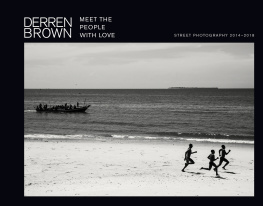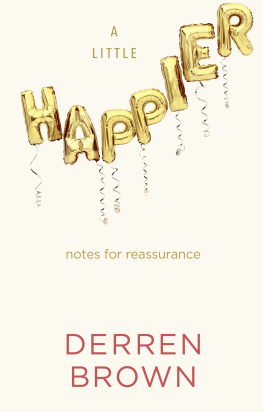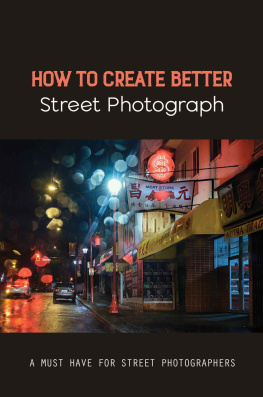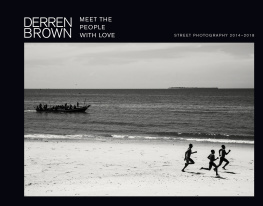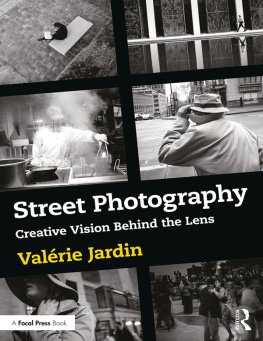
TRANSWORLD PUBLISHERS
6163 Uxbridge Road, London W5 5SA
www.penguin.co.uk
Transworld is part of the Penguin Random House group of companies whose addresses can be found at global.penguinrandomhouse.com

First published in Great Britain in 2018 by Bantam Press
an imprint of Transworld Publishers
Copyright Derren Brown 2018
Derren Brown has asserted his right under the Copyright, Designs and Patents Act 1988 to be identified as the author of this work.
This book is a work of fiction and, except in the case of historical fact, any resemblance to actual persons living or dead, is purely coincidental.
Every effort has been made to obtain the necessary permissions with reference to copyright material, both illustrative and quoted. We apologize for any omissions in this respect and will be pleased to make the appropriate acknowledgements in any future edition.
A CIP catalogue record for this book is available from the British Library.
Version 1.0 Epub ISBN 9781473561977
ISBN 9781787630826
This ebook is copyright material and must not be copied, reproduced, transferred, distributed, leased, licensed or publicly performed or used in any way except as specifically permitted in writing by the publishers, as allowed under the terms and conditions under which it was purchased or as strictly permitted by applicable copyright law. Any unauthorized distribution or use of this text may be a direct infringement of the authors and publishers rights and those responsible may be liable in law accordingly.
1 3 5 7 9 10 8 6 4 2
To all the people Ive annoyed
I
Barbara, a lady of a certain age from Milton Keynes who had showed no signs of declining, had over the years become something of a surrogate grandmother to my partner. She diligently tended his black-and-tan dachshund whenever a career in musical theatre took him on the road. Of late, this bold and glamorous widow had been deliberating whether to accept the offer of an ocean cruise with a younger man of sixty-five, who seemed to have taken an interest. Then, one grey Wednesday afternoon, before she could give her answer, pneumonia came and ended her vivid life, and with it any opportunity of a sea-faring romance.
The service was excellent, the vicar especially so, and the event was unsurprisingly well attended. I wondered which of the men amongst the rows of mourners seated in the chapel was the one who had fallen for her. Together at the front I saw her immediate family members and their evident anguish. But what struck me most deeply about the service, and what moved me above all else, began with a digital slideshow of photographs from Barbaras life, presented on a large-screen TV. Here she was, a blurry, surly schoolgirl; then an impossibly beautiful bride alongside a new husband who would die fifty years later; here a mother; there a friend amongst friends; finally the Barbara I had met once and liked very much. The image of the brightly lipsticked and boldly attired old lady, who had sat in my dressing room with her friend after a show, now gave way to that of a long life well lived. The parade of pictures, having weighed up her allotted span and declared it a beaming success, settled on one final photograph and held it throughout the rest of the service. It showed (as I remember) a thirty-ish Barbara standing by a car in a field, squinting and waving on a windy day that blew her red and white striped dress to one side, with grasslands and a few picnickers behind her. It looked like it was taken in the sixties, perhaps by her husband; they had either just arrived for or were about to leave after an afternoon of al fresco lunch (I wondered what picnickers ate and drank then: cheese sandwiches, hard-boiled eggs, a flask of tea or orange squash, perhaps pork pies). He had seemingly told her to stand by the car while he snapped a picture. No reason to suppose it took more than thirty seconds. And now, her middle-aged daughter (who at the time of the photograph was most likely an infant, perhaps already laid safely upon the back seat of the car) had chosen this photograph to be held on a screen at her mothers funeral, underscored by a sunny recording of Que Ser, Ser: a photograph to best represent her life.
Stood squinting in that field half a century ago, Barbara had no idea she was securing her final, commemorative image, and of course neither had her husband when he took the shot. I wondered what photograph of me will be shown at my funeral. Perhaps itll be one already taken, of me smiling at the camera with the rooftops of orange-brown Florence or some other warm Italian backdrop spread out in the distance. A picture that my friends or descendants will choose because it shows me happy and fulfilled, and I always liked Italy. How could I have known that this banal moment, perched on a wall after a stroll up some Tuscan hill, recorded by my partner with little thought beyond what might constitute a nice framing, would come to depict everything I was, once I am gone and unable to contest it? That the moment which will come to best represent my happiness has already passed?
I wondered how Barbara would have felt if she had known that this photograph would be used. Maybe she loved the image. Perhaps she had even asked for it to be used in that way. When I met her, she seemed to have a very unsentimental attitude towards her mortality. Yet now I felt a kind of queasiness for her, triggered by the photograph, one which encompassed my own impermanence as well as hers.
The funeral finished, and we filed across the garden to view lavish floral accolades to Barbaras popularity. A man in front of me thanked the vicar, who in turn gave him the address of a website and asked if he might be so kind as to leave feedback. I left with the memory of the photograph, which continues to move me, though is certainly now confused was it actually a red and white striped dress? Or a red coat? Was she wearing gloves? It stung, and still stings, because of what makes it a photograph, and therefore what separates it from any painting or drawing of Barbara they might have used, let alone the tribute from the vicar.
A painting, like a text, arranges and describes, and is mediated through an artist. She chooses how to arrange the components of her work, and by doing so she is normally making a point about its subject matter. The style and taste of the painter, and even the time it takes to paint the picture, are all represented in the brushstrokes that comprise the final piece. Unavoidably, then, when we look at a portrait we are being directed to consider certain ideas, such as the status of the person depicted. The painter and the writer do not quite offer us the world: they propound a story about it. Painting can feign reality without having seen it, writes Roland Barthes (and I think he writes more beautifully about photography than any other author). no painted portrait could compel me to believe its referent has really existed. A portrait is not shackled to reality in the way a photograph is. Any search for reality halts at the surface of the painting: when we examine the subjects features for depth, we can marvel only at what the artist chose to present for us with her brush.
By comparison, when we gaze deeply into a photographic portrait, we cannot but search for what is private and true. A smirk or sideways glance offers a glimpse of the unconscious rather than the contrivance of a skilled commentator. A childhood photograph of a celebrity is a place to spot that spark of genius that was to secure her successful future, or the embryonic sadness that would one day break her. It makes no sense to try to do the same with a painting.
Next page
